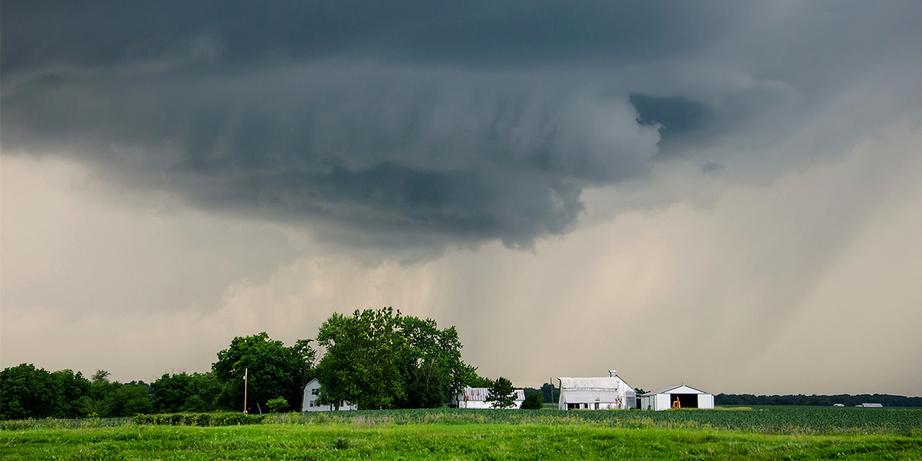Extreme storms to multiply, intensify across U.S., new simulations suggest
For the U.S., harder rain is on the way: America's summer thunderstorms are about to get stormier. Later this century, the notorious mesoscale convective storms of middle America will not just darken skies—they will also dump as much as 80 percent more water on the farms, highways and cities of the 48 contiguous states.
Mesoscale thunderstorms cover an area of around 100 kilometers (approximately 62 miles): these have been on the increase, both in frequency and intensity, in the last 35 years and new research suggests that, as the world warms, their frequency could triple.
"The combination of more intense rainfall and the spreading of heavy rainfall over larger areas means that we will face a higher flood risk than previously predicted," said Andreas Prein, of the National Center for Atmospheric Research, who led the study.
"If a whole catchment area gets hammered by high rain rates, that creates a much more serious situation than a thunderstorm dropping intense rain over parts of the catchment. This implies that the flood guidelines which are used in planning and building infrastructure are probably too conservative."
Thunderstorms already cost the U.S. around $20 billion a year in flash floods, landslides, debris flows, high winds and hail. Prein and his colleagues reported in Nature Climate Change that what they call "observed extreme daily precipitation" increased in all parts of the U.S. from 1958 to 2012: that is because rising temperatures mean more evaporation, and at the same time a greater atmospheric capacity for moisture.
President Donald Trump has made it clear that he doesn't believe in global warming and has promised to withdraw the U.S. from the global climate pact agreed by 197 nations in Paris in 2015.
But research, much of it from U.S. government agencies, suggests that climate change is happening anyway, and that U.S. cities are at risk. The latest computer simulations suggest that the number of extreme summer storms in some parts of the U.S. could increase fivefold by the century's end.
Even the eastern seaboard could be hit: intense storms over an area the size of New York City could drop 60 percent more rain than the heaviest now. And this could add up to six times the annual discharge of the Hudson River.
The finding should come as no great surprise. Climate scientists have repeatedly warned that climate change, driven by global warming as a consequence of the profligate combustion of fossil fuels that dump ever greater levels of greenhouse gases in the atmosphere, could bring ever greater extremes of heat and rain.
More Harveys
Recent research has predicted that the kind of rainfall delivered by Hurricane Harvey over Houston in Texas could become much more frequent, and Atlantic communities are more likely to be pounded by hurricanes and superstorms.
Other long-term studies have predicted that coastal flooding could create a new class of climate refugees, within America itself. The latest study is a reminder that civic authorities, and the administration itself, need to prepare.
"This is a warning signal that says the floods of the future are likely to be much greater than what our current infrastructure is designed for," Prein said.
"If you have a slow-moving storm system that aligns over a densely populated area, the result can be devastating, as could be seen in the impact of Hurricane Harvey on Houston."
For the rest of this article please go to source link below.

